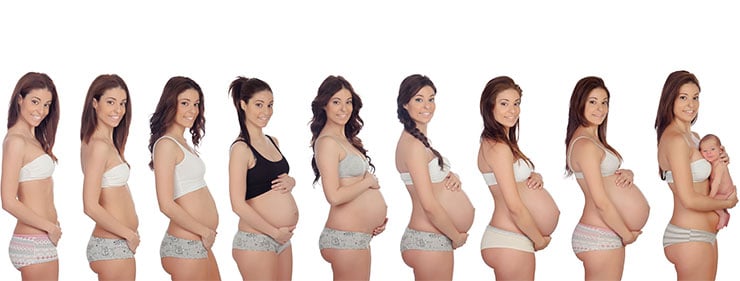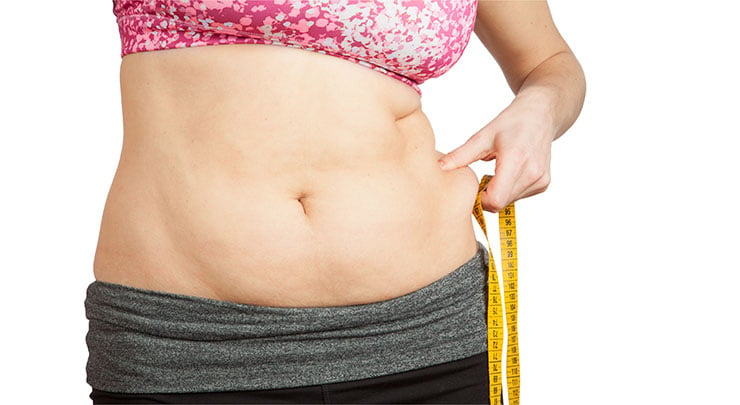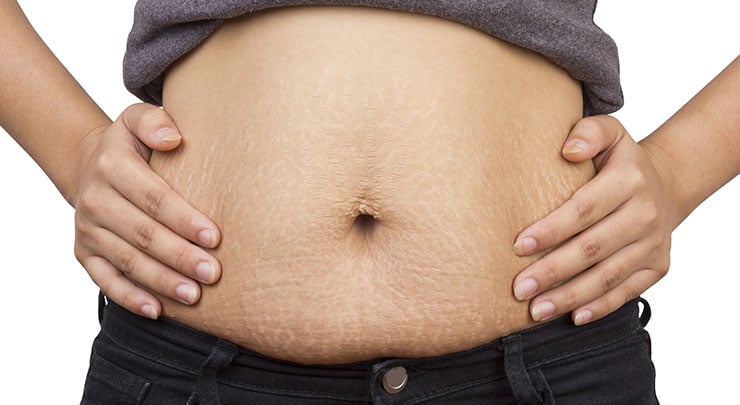
Life is not measured by the number of breaths we take, but by the moments that take our breath away.
– Maya Angelou

Life is not measured by the number of breaths we take, but by the moments that take our breath away.
– Maya Angelou
The joy of pregnancy and giving birth to your new baby is one of life’s greatest times. Having a child is undoubtedly a beautiful experience. But why didn’t anyone tell you about the changes you’d also experience to your appearance as a result?
ne of the most common things women complain about when they’re a mom is how they’re no longer looked at as a woman anymore. They’re just looked as a mother. You might not feel attractive anymore, just because of how having a child has taken away from your appearance.

Unfortunately, your body will never be exactly the same as it was before having kids. You figure may be softer, saggier or larger. Here are the most common ways your body changes when you have kids. While one or more might not apply to everyone, we’d say these things occur in the majority of women.

You’ve just carried another person in your mid-section for several months. As it grew larger and larger, your skin naturally had to stretch to accommodate your expanding size. Once you’ve given birth, the skin on your stomach has stretched out so much that it probably won’t snap back. It’s kind of like a plastic bag that you’ve filled up a little beyond capacity. When you take everything out of the bag, it won’t go back to its original shape. Within a year or two, your skin may bounce back a bit, but you’ll have the effects of aging and gravity fighting against you.
Saggy skin is pretty much a permanent thing that you can’t get rid of with exercise and diet. So, even if you can get rid of the weight you gained with pregnancy, the saggy skin is here to stay. In fact, you might develop more saggy skin with weight loss. That’s why a tummy tuck is so popular among women who’ve had kids.
global$galleries_array;
Stretchmarks, or striae, develop when elastic fibres located just below your skin break. When you get pregnant (or when you gain weight quickly), your body grows at a rate that your skin just can’t keep up with, and this is how stretchmarks develop. According to the American Academy of Dermatology, about 90% of women develop striae when they’re seven or more months pregnant.
Like saggy skin, stretchmarks are permanent. Fortunately, some can be removed with a tummy tuck or breast lift, depending on their location. Both procedures can also improve the appearance of those that can’t be removed.
With pregnancy, your breasts increase in size with milk production. This increase in size, and the following decrease when the milk is consumed by your baby or absorbed by your body, can be quite dramatic. The same thing that happens to the skin in your mid-section happens to your breasts; it gets stretched out and is unable to snap back. So, even though your breasts typically return to their original, pre-pregnancy size after you wean your baby, the stretched out skin causes them to look saggier. The shape of your breasts becomes flatter, projecting downward more than forward.
The size of your nipples and areolae increase naturally, along with the size of your breasts overall. Their change in shape also makes it easier for your baby to latch on to breastfeed.
Hormones are to blame for the change in pigmentation. Your hormones stimulate melanocytes, the cells that produce pigment in your skin, and that’s why your nipples and areolae get darker.
Darker pigmentation may slowly lighten with time, but the size of your nipples/areolae may remain the same even though your breasts are back to their original size. An areola reduction can be performed if you’re concerned that they’re still too big.
This weight gain is attributed to such things as the fetus, extra blood supply, breast tissue and fat. Fat is about 5lbs to 9lbs of your pregnancy weight, giving you the energy to breastfeed.
Once you stop breastfeeding, that fat you put on no longer has a purpose. Unfortunately, it is usually stubborn and can take a while to shed.
Exercise and a healthy diet is the gold standard for eliminating excess fat and toning your body. For your exercise regimen, a combination of cardio and strength training is recommended to burn fat and increase muscle mass. However, if you find that your positive lifestyle isn’t helping, you can consider a tummy tuck and/or liposuction to get rid of that stubborn fat once and for all.